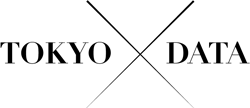
Dear Reader,
Here we are again, from the PLATOON KUNSTHALLE in Berlin, for the second report of our residency. Enjoy this report as it is the penultimate one.
While we still don’t know why the sky is blue nor why Italian coffee tastes as it does, we learned quite a bit and you’ll be pleased to read that our project is in its intensive pace. Between soldering a few cables, drilling holes in MDF plates and building our own custom-made winding system, we came across some very interesting material concerning how data is being produced and used in our more-so-than-ever-globalized world.
Gathering information and trying to represent it in a way that allows us to have a better understanding of it or reveal something we have not known yet, is not something new. What has changed and will most certainly continue to evolve is the amount of data available, its accessibility, its usage and perhaps its format. There are of course different types of data, but today’s phenomenon is about “Big Data”, groups of information so big that it is a real challenge to work with. This is mostly what has been interesting for us, and perhaps even more so the growing interest it has created lately, with all the privacy and security concerns that come along. This topic brings up some appealing factors to us.
First is the fact that visualising data can create some very interesting shapes and patterns or even animations for the eyes; especially with the large size of information and technologies available today. In this regard, Jer Thorp is a strong inspiration to us, as well as The Office for Creative Research.
In addition, a good usage of that data is going to slowly but surely change the world and how we understand its mechanism; although this can happen only if we engage in that field, not only as a scientist or an artist, but as a citizen. As a large ratio of the data being created and used are derived from our daily usage of the internet and mobile phones, we should be controlling it and make sure that this data is used in the best possible way. While it is also our responsibility to define precisely what is the best way. Here, the work of We the Data is a good step in a very positive direction, as well as the work of the incredible Gapminder Foundation. There are also some thought-provoking discussions on this subject at TED Conferences, organized by the Sapling Foundation.
